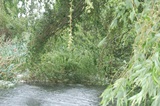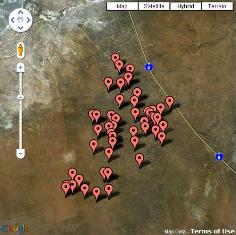Weaver news
| Altwegg R, Doutrelant C, Anderson MD, Spottiswoode CN, Covas R. 2013. Climate, social factors and research disturbance influence population dynamics in a declining sociable weaver metapopulation. Oecologia online.
Abstract. Population trends are determined by gains through reproduction and immigration, and losses through mortality and emigration. These demographic quantities and resulting population dynamics are affected by different external and internal drivers. We examined how these demographic quantities were affected by weather, researchinduced disturbance, local density, colony site and year in a metapopulation of 17 sociable weaver (Philetairus socius) colonies over 17 years of study (4 years for reproduction). Most colonies declined, but at different rates. The four demographic quantities were related to different drivers. Survival strongly varied among years and colonies and was positively related to rainfall and negatively related to extreme temperature (together explaining 30 % of variation) and disturbance (measured as number of captures conducted at a colony; 7 %). There was a trend for a positive relationship between reproduction and rainfall (50 %). Movement was mainly related to local density: individuals were more likely to emigrate from small to large colonies and from colonies that were either well below or above their long-term mean. They were more likely to immigrate into colonies that were nearby, and below their mean size. We then quantified the effects of these relationships on metapopulation dynamics using a multi-site matrix projection model. Rainfall was potentially a strong driver of metapopulation dynamics. In addition, field-work disturbance might have contributed to the decline of this metapopulation but could not explain its full magnitude. Hence, through a combination of analytical methods we were able to obtain information on the main drivers affecting dynamics in a declining metapopulation. This analysis is part of the on-going studies of the Sociable Weavers at Benfontein Game Farm, near Kimberley, South Africa. 17 colonies were included, from 1993 to 2009 (some colonies were not studied for this full time span). In total, the analysis included 4295 captures of 2385 adult sociable weavers. The colonies were subject to 1 to 5 full captures per season by flushing all individuals into mist nets set up before dawn. Individual adults were also captured with a hand net in the nest. The authors estimated colony sizes during capture events as the number of individuals caught plus the number observed to avoid the mist nets, which usually comprised only a few individuals. Literature as featured in Weaver Watch news items |











